TechRadar Verdict
Chinese phone maker Doogee breaks into the wilderness communications market with the highly robust S80, although it's hardly a revolution from the S70 that came before. Has a huge battery and walkie-talkie tech for those who like to imagine they’re Bear Grylls.
Pros
- +
Great battery life
- +
Walkie-talkie
- +
IP68 waterproof
Cons
- -
Heavy
Why you can trust TechRadar
Chinese phone makers are breaking out of their traditional home market and exploring the global market to deliver more sales.
What they lack is brand awareness in the West, but have a knack of finding niche solutions that haven’t been exploited by the likes of Apple and Samsung.
The Doogee S80 is a prime example of the products the company is launching. It’s a fully featured Android 8.0 phone that’s built to take a few knocks out in the wilderness and come back working.
- Interested in the Doogee S80? Check out the website here
Price, availability and value
On the Doogee website, it reveals that the original MSRP of this phone was $429.99 (£335), but that you can ‘snap up’ the device for $379.99 (£296), and it now comes with some ‘gifts’.
The items in our review hardware didn’t quite match those in the promotion, but we did find a belt clip, extended antenna, an OTG cable and a converter that allows you to plug a 3.5mm headphone jack into the USB Type-C port to get sound.
Amazon.com only has the S80 on import in America, where in Europe it can be found more easily. The UK Amazon price was $460.72 (£359), and we did find it for as little as $374.70 (£292.24) elsewhere.
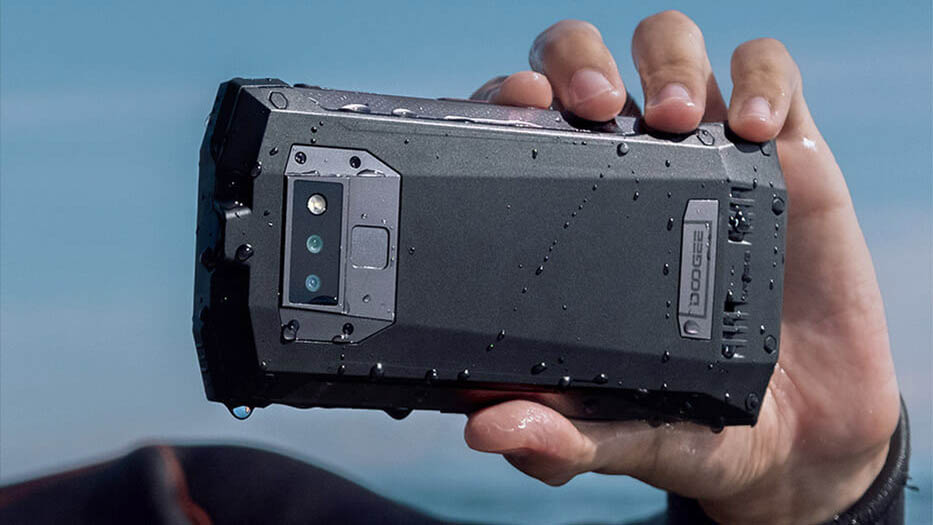
Design
As phones go, the S80 is something of a monster, and that’s before you connect the external antenna.
Sign up to the TechRadar Pro newsletter to get all the top news, opinion, features and guidance your business needs to succeed!
Weighing in 398g, and an amalgam of glass reinforced plastic, metal and glass, if a super-model hurled this phone at her assistant, the results could be life-threatening.
But then to mount a 5.99-inch screen, a 10k mAh battery and all the electronics to drive it, the S80 was never going to be slim.
It measures 172mm long by 82.4 mm wide, and a chunky 21.2 mm thick, and has buttons down both flanks along with SIM tray access.
The SIM tray is hidden behind a protective rubberised insert, to protect from dust and water ingress, and these gaskets also cover the USB Type C at the bottom and the external antenna connection on the top.
As with all Chinese phones, it seems now; dual Nano SIMs can be mounted, if you are prepared to forego having the extra memory offered by a MicroSD card.
With the inconvenience of needing to pull a rubber plug out to charge via USB Type-C, the designers thankfully included wireless charging in the massive feature set of this device.
If you do want to use Type-C, perhaps to charge more rapidly, you’ll need to use the provided cable and charger. With the port so deeply positioned inside the phone, it uses a longer version of the Type-C male connector to make proper contact, and the standard one won’t reach.
For those that like their phones to have style, there isn’t much here, as the S80 shouts functionality and practicality rather than elegance and finesse. The build quality is good, but it isn’t going to win any notoriety for winning the most stylish device of the year.
That said, it feels nice to hold. Sits well in hand, and the fingerprint reader on the rear is positioned perfectly to be located on the first attempt to unlock.
But the outside is only part of the S80 story, so let’s look at those critical internal features that make this phone a bit special.
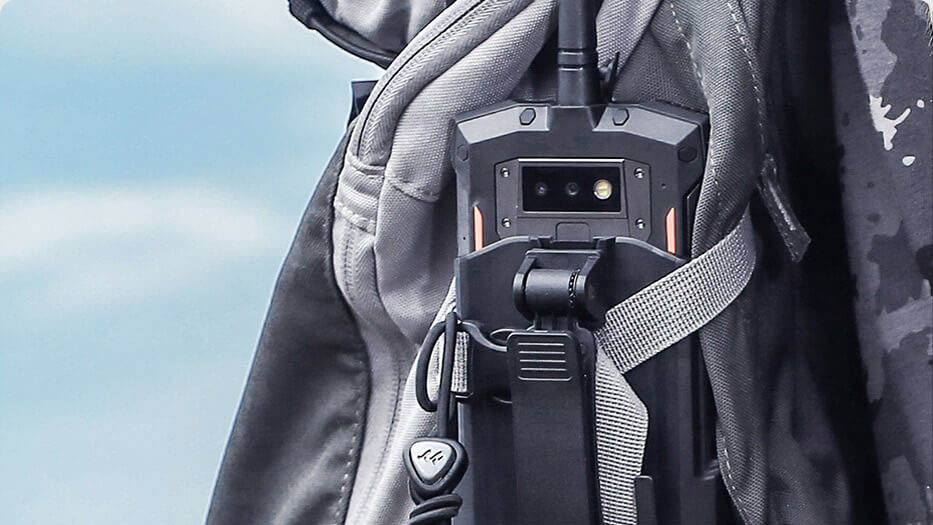
Hardware
The price on this device might be higher than some expect, but Doogee did almost throw the kitchen sink inside, making this a very powerful and slick device.
Its built around the MediaTek Helio P23 ARM processor, an eight-core CPU which can run at 2.5GHz (single core) using Cortex-A53 technology.
In this design that’s linked to the ever-capable ARM Mali G71-MP2 GPU running at 700MHz for fluid graphics and smooth video playback.
That said, this machine is strong as a multi-core device, but much less impressive with a single task. But, more of that later.
As standard, the S80 has 6GB of RAM and 64GB of ROM, and you can augment the application and data storage using a MicroSD card, up to 128GB in size.
The display is an LG made IPS panel with a natural resolution of 1080 x 2160 pixels that gives a reasonable colour palette and excellent viewing angles.
The makers and they’re not alone doing this, refer to this screen as an 18:9 ratio, in a way that contradicts every maths lesson we took on ratios. Surely, that’s a 2:1 ratio, and not 18:9?
Whatever silly reason they have in doing this, the screen is big and bright and excellent for those with less than perfect vision.
What Doogee decided to do with this in respect of Android 8.1 was the very wise choice of not doing anything, using the stock interface almost entirely.
The only hint of deviation is that Android 8.1 allows icons to be substituted, and all the ones that are phone specific have a particular style. It doesn’t fit with all the new minimalist ones from Google, but it doesn’t look awful.
Our only concern about the OS we have is that while the review model was at version 8.1, it’s security update was last updated in August, and we’ve had at least three more since.
Even big brands, like Lenovo, seem to treat security updates like they’re entirely optional even after remarkably short periods of product life.
And, we can only hope Doogee isn’t thinking of doing the same with the S80.

Camera
There are no less than three cameras on the S80, a front-facing 16MP one designed by Samsung for selfies, and two on the rear by Sony. This rear camera is a combination design that uses the 12.2 MP Sony IMX363 and another 5 MP sensor.
The IMX363 is a very nice camera sensor and has had previous outings in the Asus ZenFone 5/5Z, numerous Xiaomi Mi phones and the Vivo NEX, to mention just a few.
The S80 uses the IMX363 with an f1.8 lens, a rapid Dual Pixel autofocus system and by using the combination of two sensor inputs, its low light capability is impressive.
Is this a good enough camera to be your only source of captured images on trip?
Well, the hardware is good enough, but Doogee didn’t give it a camera app that does any more than the most basic functionality.
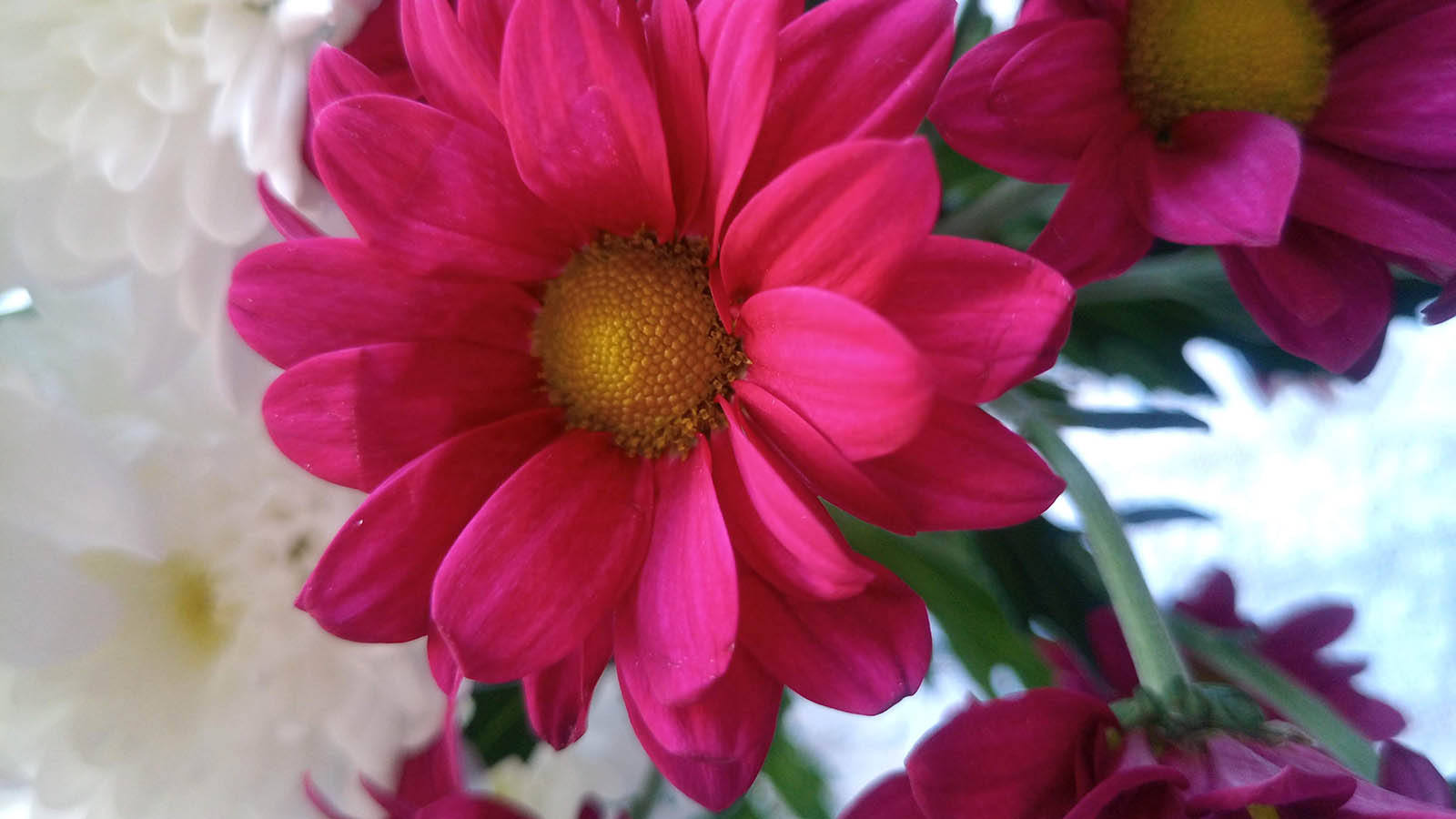
There is no HDR, no face tracking and no panoramas. It has a macro mode and beauty mode that uses soft focus, and you can turn the flash off, but sadly that’s the full repertoire for still images.
We downloaded the Open Camera app, enhancing the experience massively. As shame that Doogee didn’t consider including it, or something better.
The video mode is equally sparse, but under Android 8.1 you do get the ability to use ‘Duo’, the high-quality video phone mode.
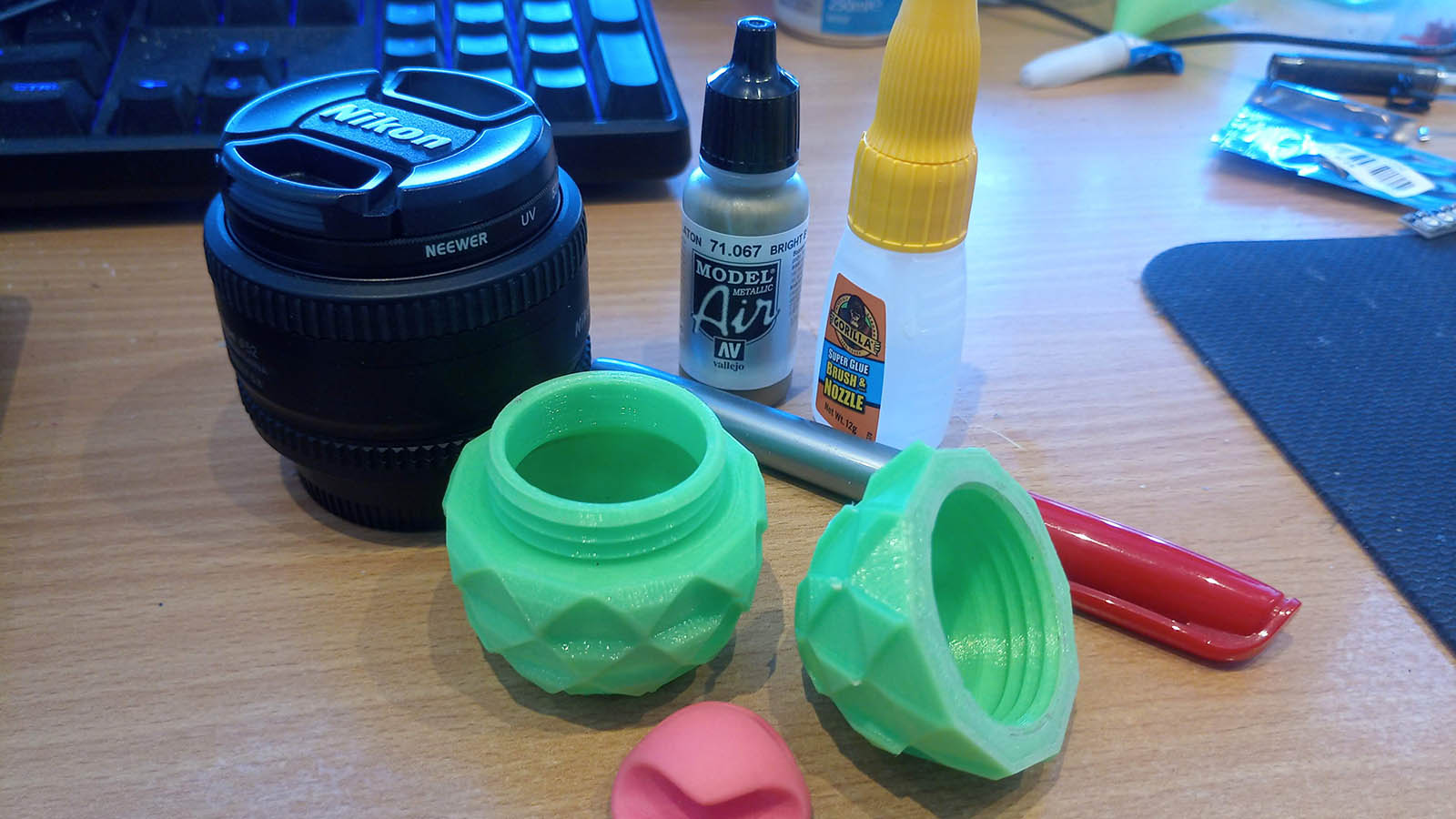
The pictures we took are fine, well saturated and sharp, but we can’t help feeling that the excellent rear sensor is let down by the lack of software developer development time.

Accessories
When we assess a phone, we have a long list of potential sensors that a phone can have that we either tick or cross accordingly. The S80 has a tick in nearly every single sensor box.
It has NFC, GPS, a G-sensor, a proximity sensor, Barometer and Coulometer. Oddly, the only thing missing a gyroscope, and the ability to detect blood sugar levels.
While most phones have most of these too, the inclusion of barometric sensing, among other useful additions, could make this device useful for anyone collecting data on a journey.
The other thing of notoriety is the walkie-talkie functionality, something we’ve not seen in a phone for a very long time.
In the S80, it uses DMR (Digital Mobile Radio) technology, a replacement for the analogue technologies of the past. It uses frequencies in the 400-480 MHz range and can achieve a 10 km range in open range conditions.
We’ll be honest and say that we never tested this aspect. Because we don’t have another DMR device, which underlines the potential catch in using it. Because unless the entire team has S80 phones or DMR walkie-talkies, then it is of limited value.
If you do, then you only need the S80 to communicate, even outside mobile phone coverage area, if you are within range.
And, the final party piece of this phone is its resistant to the environment, with the S80 having IP68, IP69K and MIL-STD-810G certifications.
What these codes represent is the ability to endure being dropped from six feet on to a hard surface, temperatures from -30C to +60C, dust and water immersion.
Any phone with IP68 should be able to withstand total immersion to a depth of 1.5m for at least 30 minutes, and the IP69K infers it could handle high-pressure steam, as when something is steam cleaned.
For those curious, the MIL-STD-810G label isn’t a true certification. What it indicates is that the makers subjected the device to some, not all, of the tests outlined in military MIL-STD-810G spec document. One test, for example, is a drop from 8ft on to rough concrete with no more than superficial damage to the phone.
As we’re sure Doogee would like the review S80 back in pristine condition, so we declined to abuse it in any way that would reveal how these claims might be an exaggeration or not.
But, based merely on handling the S80, it certainly looks like it could survive significant levels of abuse.
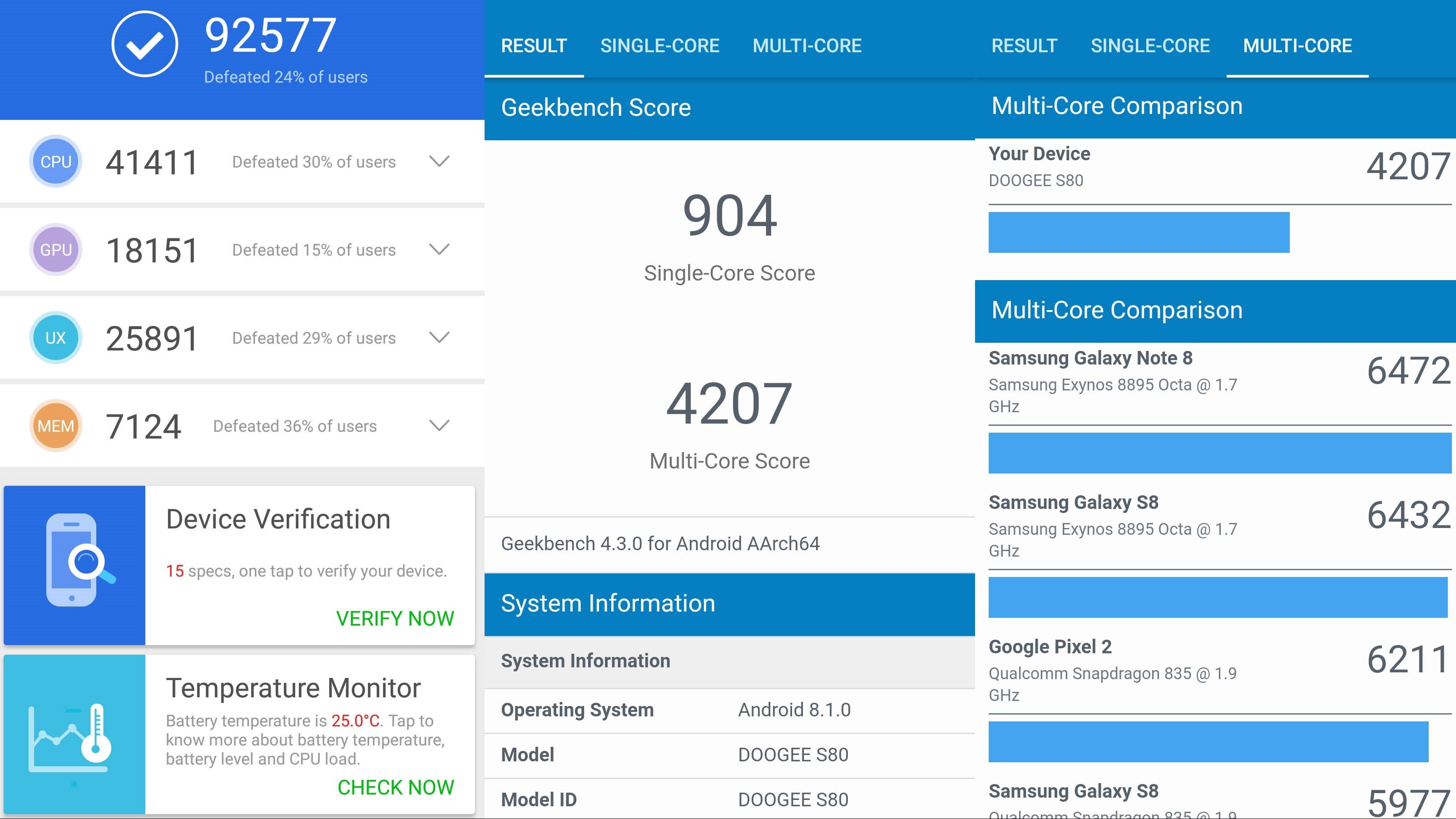
Performance and benchmarks
With the very high specification of the SoC in this phone, we expected something spectacular in the numbers, and it wasn’t all wonderful.
In our testing, we deployed both GeekBench 4 and AnTuTu Bench to test CPU, GPU, memory and battery performance.
The most telling numbers are the GeekBench CPU and Compute scores, as the S80 managed just 904 with single core, 4207 using multi-core, and 3292 on Compute.
Those results put it on a level with the HTC 10 Evo, Xiaomi Mi Note or the Samsung Galaxy J.
There are much faster phones around, but for most uses the S80 is quick enough.
Where it does better, and it should with 10080 mAh under the hood, is in the battery test.
It scored 11359, and that’s a massive number compared with a typical phone or even some tablets. The Xiaomi Mi Max 2, for example, has a 5300 mAh battery and manages just over 6000 in comparison.
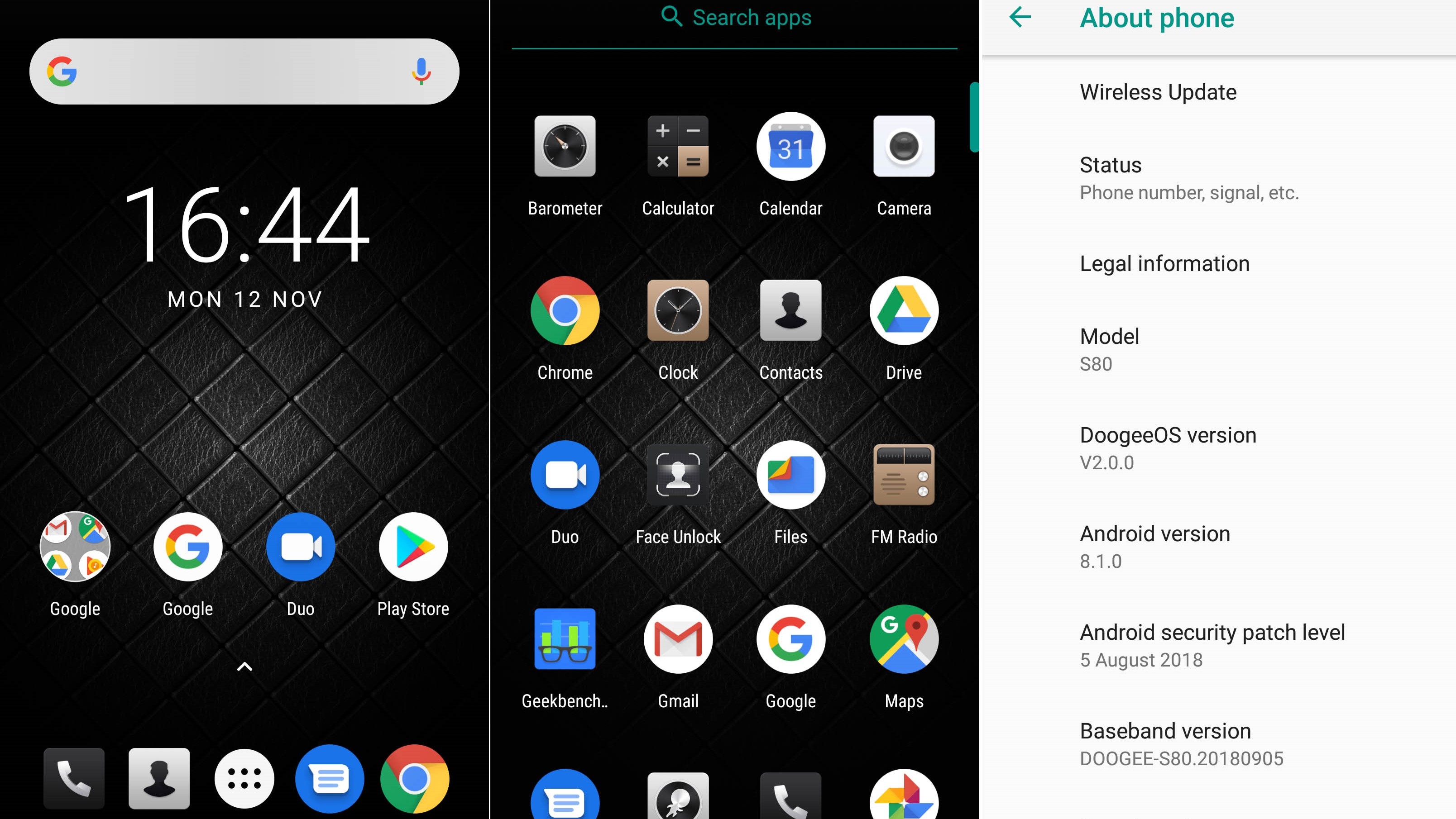
Doogee quotes a standby period of 1308 hours or 54.5 days. And, while real-world conditions almost certainly wouldn’t enable the phone to operate for that long or the 136 hours of call time the maker estimates, it’s certainly a strength of the S80.
Except for the battery, this phone is almost identical to the Doogee S70 that came before it. Same processor, memory, storage, screen and OS.
What Doogee did was almost double the battery size, added the walkie-talkie tech and increased the price significantly.
That strategy seems flawed, given that you can buy USB power packs that will last longer for less than the difference, and the walkie-talkie tech has only situational value.
Final verdict
If you intend to wander off the beaten path, then the Doogee S80 is probably a more suitable company than an Apple iPhone or anything made for more general use.
It’s robust, has an easy to read display, almost all the sensors you can expect on a phone, great battery life, and it doubles as a walky-talky if you get out of service range.
On the negative side of this equation, you could easily add half a kilogram to your backpack with cables and accessories, and the phone isn’t exceptional at much.
But, if you want something that should be able to handle being dropped or even immersed, the S80 has some of the qualities that adventurers might like.
- We've also highlighted the best rugged phones
Mark is an expert on 3D printers, drones and phones. He also covers storage, including SSDs, NAS drives and portable hard drives. He started writing in 1986 and has contributed to MicroMart, PC Format, 3D World, among others.

